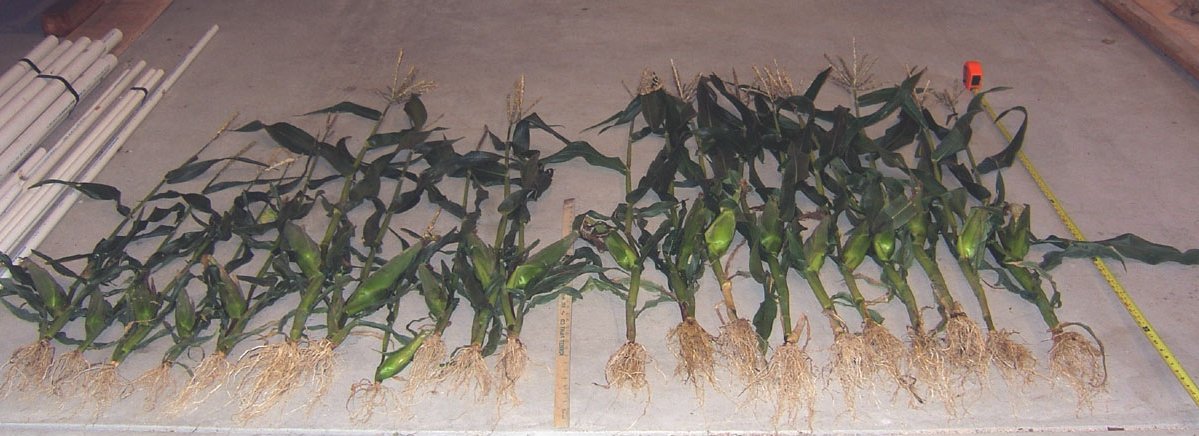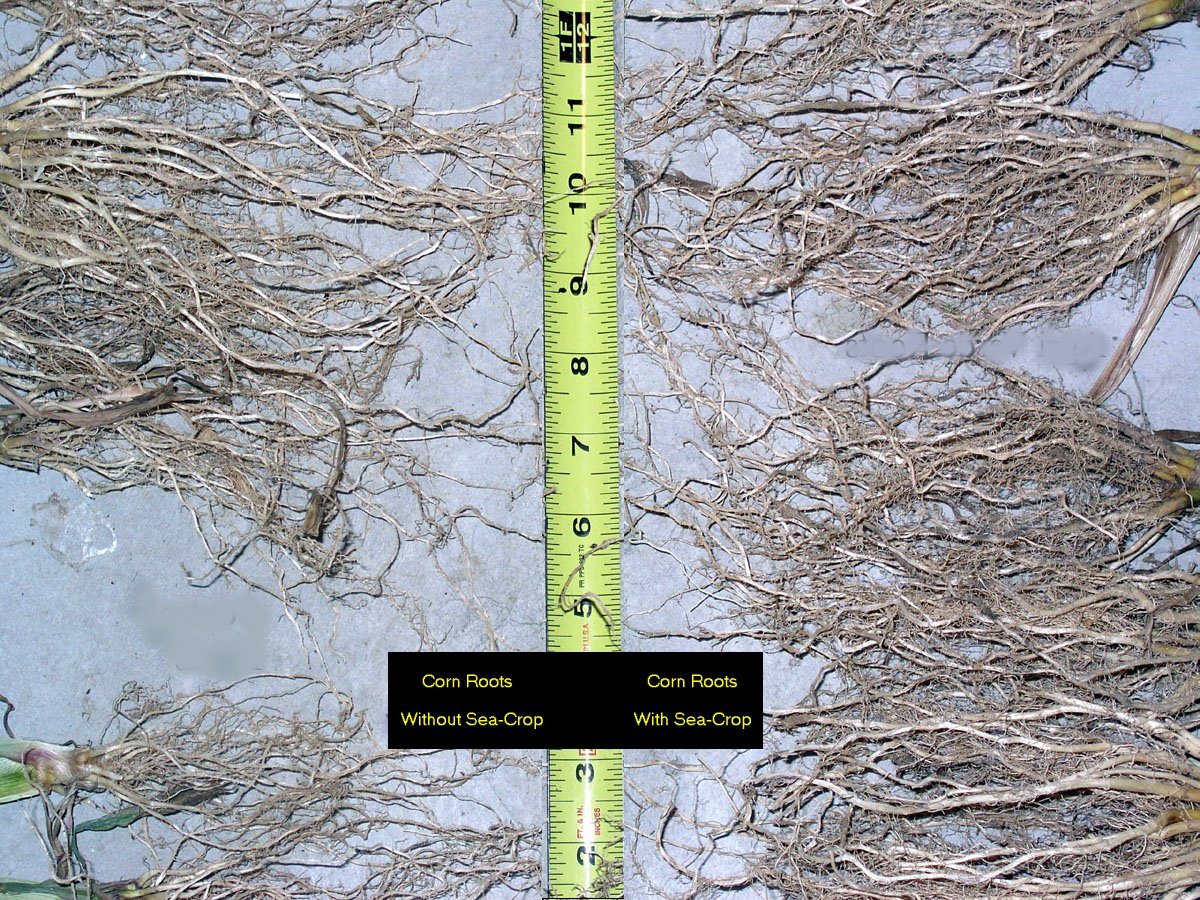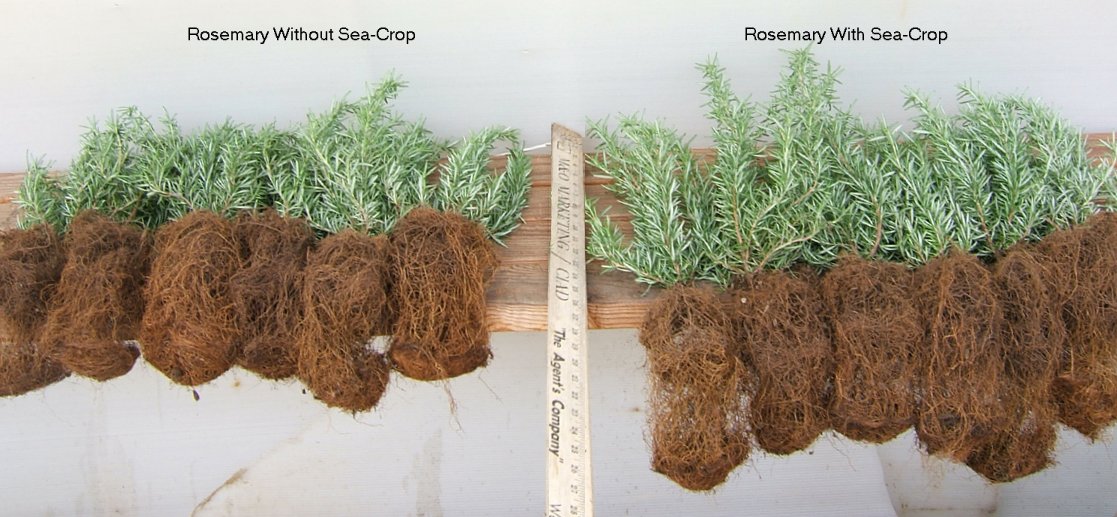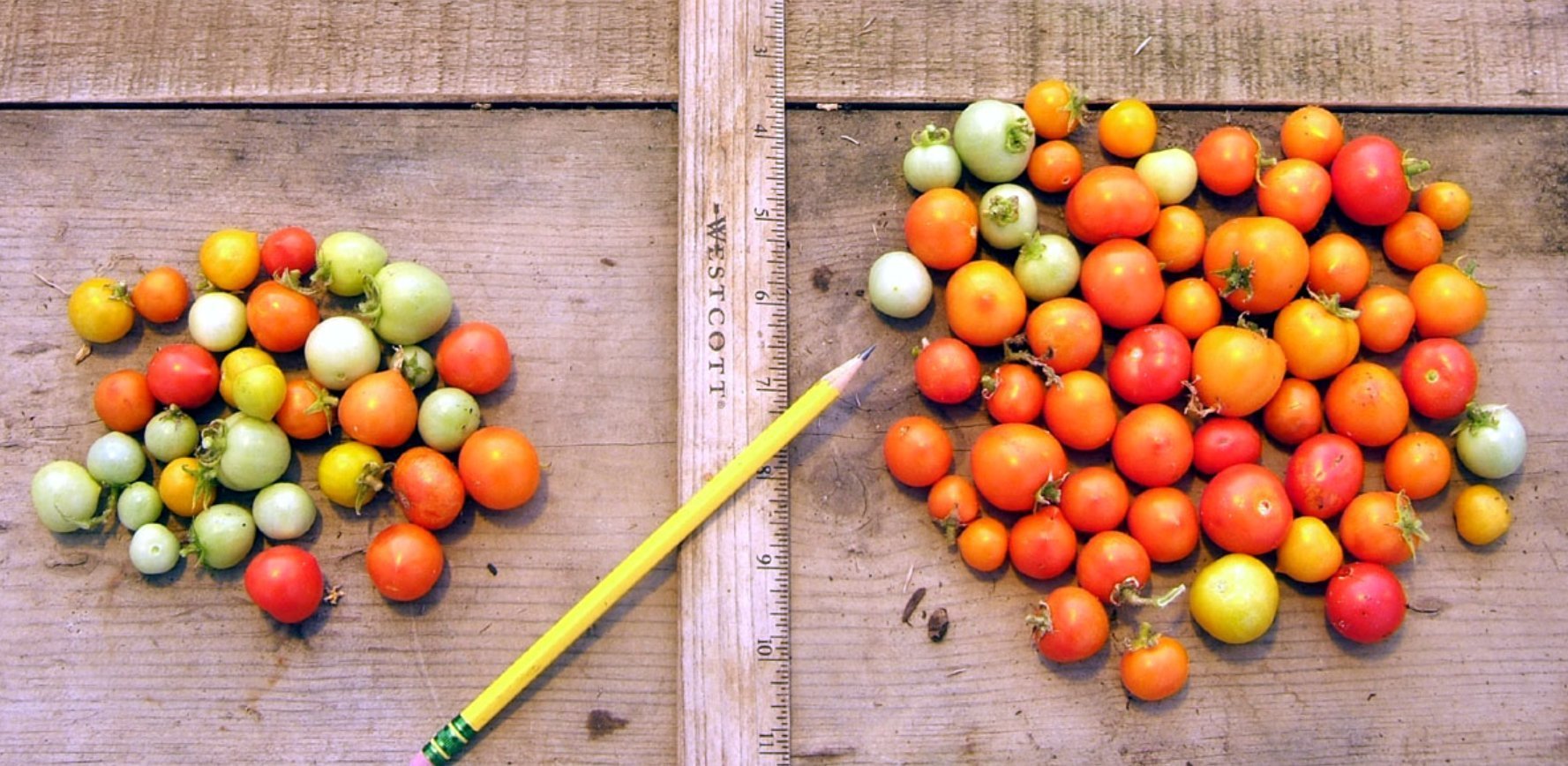INDEPENDENT FIELD TRIAL and TEST RESULTS on SEA-CROP for 2007
These tests were sponsored at four
different test
facilities by an entity independent of Ambrosia Technology.
Sea-Crop is approved
for use in certified organic farming and has been approved as a mineral
supplement in animal nutrition.
Field Trial at Lousiana State
University
Corn: Two
tests treated with 2 gallons per acre and 4 gallons per acre gave
increased
corn harvests of 58.15% and 94.49%
respectively.
Eugene, Oregon Tests
Sweet
corn was planted and treated in the furrow with Sea-Crop at the
rate of 1.8 gallons
per acre. Scotts Osmocote N-P-K fertilizer
was used
on both the untreated control and treated tests. After 115 days the
plants were
dug up, the roots washed and the entire plant desiccated so that dry
matter
weights could be compared. The percentage gain of the Sea-Crop treated
plants
as compared to the controls is listed below.
|
Start Date |
Duration |
Replications |
Dry Matter Increase of Sea-Crop Treated Plants |
|||
|
|
|
|
Roots |
Tops |
Ears |
Total |
|
|
115 days |
10 |
65.22% |
46.62% |
45.11% |
47.14% |

Control corn is on the left and Sea-Crop treated corn is on the right.

|
Start Date |
Duration |
Replications |
Dry Matter Increase of Sea-Crop Treated Plants |
||
|
|
|
|
Roots |
Tops |
Total |
|
7-17-200 |
30 days |
8 |
325.25% |
14.56% |
43.87% |
Orange Thyme starts were
transplanted into one gallon pots and treated with Sea-Crop at the
rate of 3 gallons per acre. Cotton seed meal was used on both the
untreated
control and treated tests as an organic fertilizer. After 30 days the
plants
were dug up, the roots washed and the entire plant desiccated so that
dry
matter weights could be compared. The percentage gain of the Sea-Crop
treated
plants as compared to the controls is listed below.
|
Start Date |
Duration |
Replications |
Dry Matter Increase of Sea-Crop Treated Plants |
||
|
|
|
|
Roots |
Tops |
Total |
|
|
45 days |
6 |
31.32% |
15.16% |
18.58% |
Rosemary
(Salem) starts
were transplanted into one gallon pots and treated with Sea-Crop at the
rate of
3 gallons per acre. Cotton seed meal was used on both the untreated
control and
treated tests as an organic fertilizer. After 30 days the plants were
dug up,
the roots washed and the entire plant desiccated so that dry matter
weights
could be compared. The percentage gain of the Sea-Crop treated plants
as
compared to the controls is listed below.
|
Start Date |
Duration |
Replications |
Dry Matter Increase of Sea-Crop Treated Plants |
||
|
|
|
|
Roots |
Tops |
Total |
|
|
45 days |
6 |
23.14% |
15.29% |
17.24% |

French Tarragon starts were
transplanted into one gallon pots and treated with Sea-Crop at the
rate of 3 gallons per acre. Cotton seed meal was used on both the
untreated
control and treated tests as an organic fertilizer. After 30 days the
plants
were dug up, the roots washed and the entire plant desiccated so that
dry
matter weights could be compared. . The percentage gain of the Sea-Crop
treated
plants as compared to the controls is listed below.
|
Start Date |
Duration |
Replications |
Dry Matter Increase of Sea-Crop Treated Plants |
||
|
|
|
|
Roots |
Tops |
Total |
|
|
45 days |
6 |
32.96% |
19.64% |
26.02% |
Strawberry (June bearing) bare root
starts were transplanted into one gallon
pots. Scott’s Osmocote N-P-K fertilizer
was used on
both the untreated control and the treated tests. On the sixth day
after
transplantation the treated plants received Sea-Crop at the rate of 3
gallons
per acre. The treated plants produced fruit earlier as well as later in
the
season with significantly more fruit during the peak harvest season.
Total
increase in yield of fruit by weight 65.2%
|
Start Date |
Duration |
Replications |
Dry Matter Increase of Sea-Crop Treated Plants |
||
|
|
|
|
Roots |
Tops |
Total |
|
|
9 months |
8 |
41.2% |
120.7% |
69.8% |
Tomato
(Micro-tom)
seeds were planted in 4 inch pots in August. Molasses was used as a
fertilizer
for both the untreated control and the treated tests.
|
Start Date |
Duration |
Replications |
Harvest Increase of Sea-Crop Treated Plants |
|
|
|
|
|
Number of Fruit |
Total Fruit Weight |
|
|
133 days |
8 |
83.9% |
144.3% |

Control tomatoes on the left Sea-Crop tomatoes on the right
Davis California Test
Cucumber seeds were germinated,
then transplanted into 4 inch pots and treated with
Sea-Crop at the rate of 3 gallons per acre. A commercial N-P-K
fertilizer was
used on both the untreated control and the treated tests. After 4 weeks
the
plants were dug up, the roots washed and the entire plant desiccated so
that
dry matter weights could be compared.
|
Start Date |
Duration |
Replications |
Dry Matter Increase of Sea-Crop Treated Plants |
||
|
|
|
|
Roots |
Tops |
Total |
|
|
4 weeks |
6 |
72.5% |
68.4% |
69.4% |
Morocco
University Test
Eggplant sets
were planted in 5 liter pots and 8 replicates were then treated with a
foliar
spray of Sea-Crop that was diluted to a 1% concentration. There was no
increase
in fruit set but the fruit of the treated plants were 79.5% larger by weight
giving a 79% increase in yield
over the control.